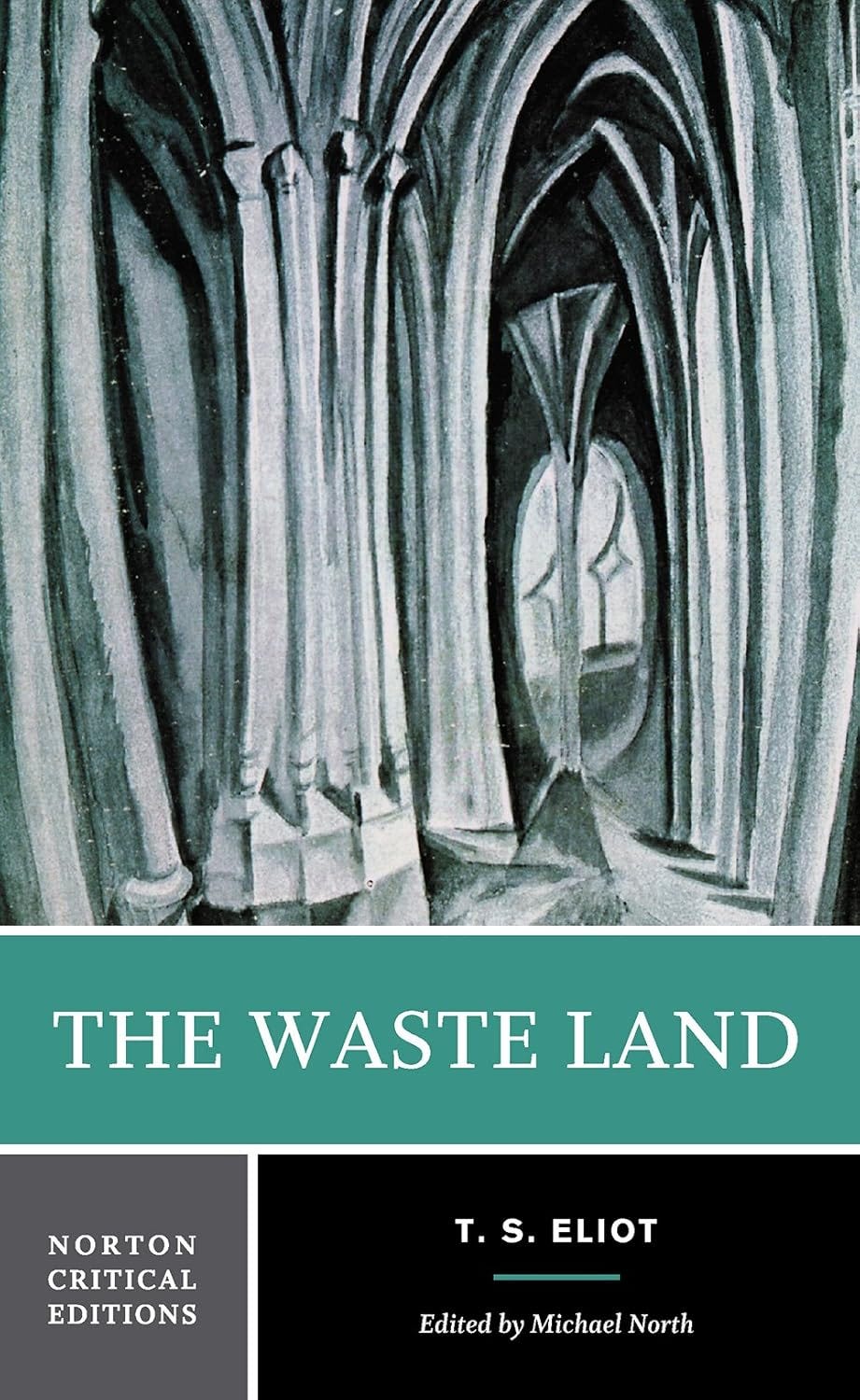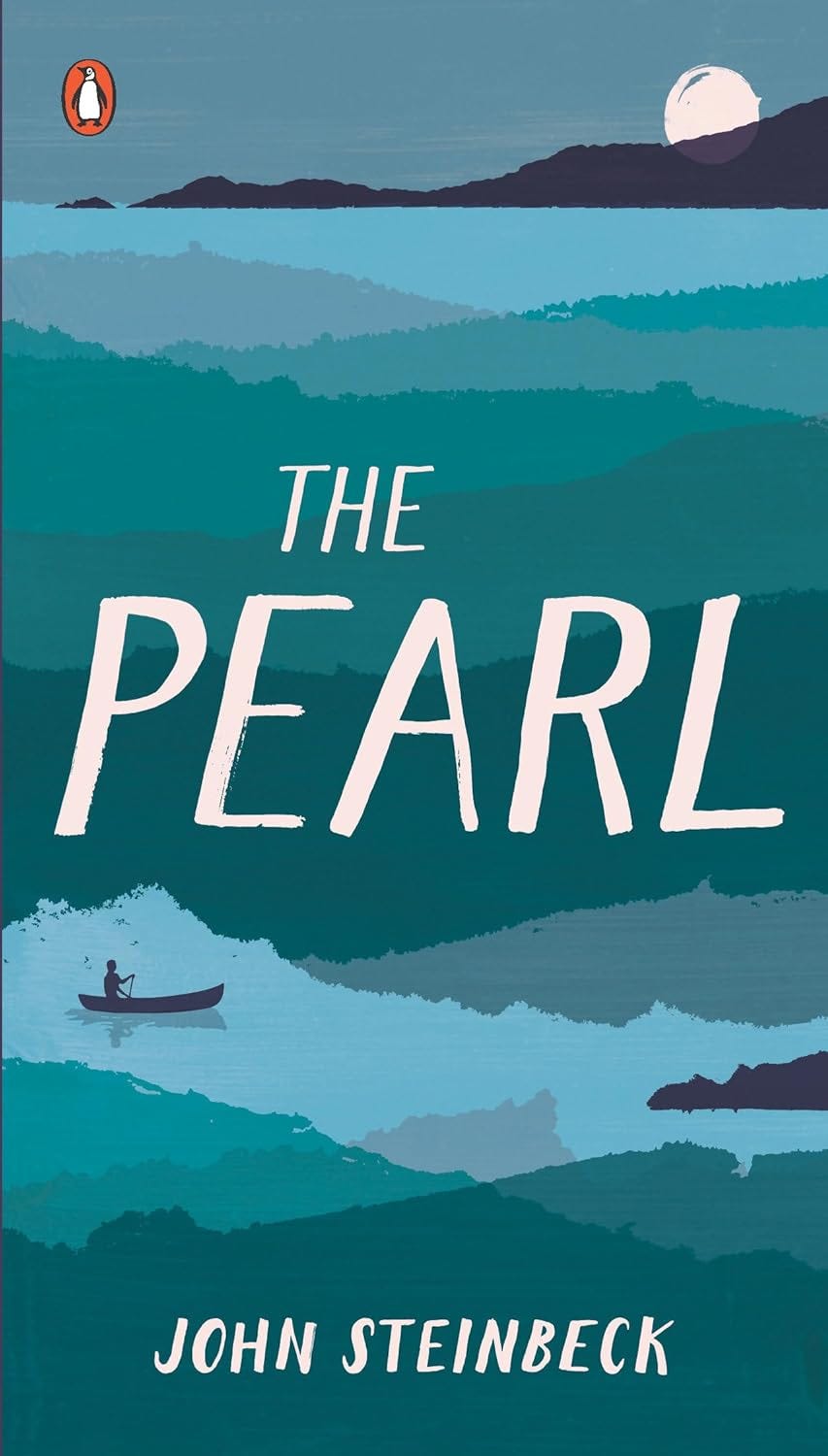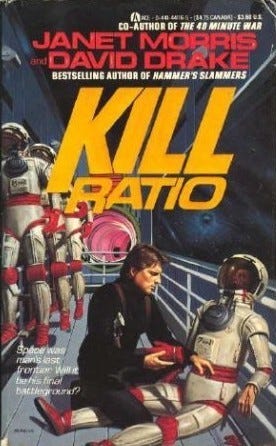T.S. Eliot (edited by Michael North - The Waste Land - Norton Critical Edition (Original text 1922, Norton Critical Edition 2000)
The Waste Land is one of those literary artifacts, not unlike Alice’s Adventures in Wonderland (which I’ve written about previously) that has suffused so deeply through Western culture that extricating the poem from its broader impact is nearly impossible. Lines have sprung from it and taken new life of their own as individual literary phrases, divorced from their origin; despite this being my first time with the poem proper, I felt like I recognized probably a third of it on sight from other books, films, television, or graffiti. To evaluate The Waste Land on its own is an impossible task; a century past its initial publication, it is simply the stuff that literature is made of now. As a result, it runs into the typical problem of such a legacy: it can scan as cliched, despite being the very origin of many of those later cliches. The pain of experiencing originary art is in one’s familiarity with its warped and lesser descendants, where those descendants often end up, quite unfairly, reflecting poorly on the parent. This is unavoidable, and the only way out is to very deliberately disengage from that cultural detritus, experiencing the art with as blank a slate as is possible. It can never be perfect, but it can help.
That being said, The Waste Land is able to stand on its own relatively untainted by a whole universe of imitation on the strength of its prose alone. Reinserted into their proper context, those familiar lines take on new life, and Eliot’s talent for sumptuous description and jarring contrast has lost little to no potency over the years. Per usual, what The Waste Land possesses that its descendants lack is a multifaceted and unified approach to its writing; while later work by imitators would hone in solely on the abrupt and dreamlike transitions between images, its extensive literary references, or the imagistic tradition it’s (at least in part) drawing from, only The Waste Land manages to combine all those elements into a complete piece. Rather than feeling like a hasty piece of experimentation, like R&D for something more substantial, The Waste Land IS that more substantial piece; the most remarkable part of the poem is in its ability to both expand the boundaries of the form while operating at the height of its traditions. It’s also telling that I, someone with a fairly limited (though not completely absent) background in studying poetry can find plenty to appreciate. The best of the form has that effect; a great well of poetic knowledge is rarely necessary to understand and enjoy the bulk of it. Nor does it really necessitate an extensive background in literature itself; for all its referentiality, The Waste Land’s essential meaning is clear and relatively straightforward even without a full grasp of all Eliot’s allusions.
Which is why I find it simultaneously interesting and amusing that the critical material which takes up much of this edition seems so doggedly infatuated with those particular references. In terms of the value of the added essays, it’s a mixed bag. Learning about the publication history of the piece is fascinating, revealing that the advent of Modernism was much less a happy accident than a very deliberately and cannily pursued goal of Ezra Pound. Some of the critical appraisals, too, are useful- deeper dives into the references of the poem help to construct a pretty handy mental map of what much of the Modernist movement was referencing across works far beyond The Waste Land itself. But much of the more abstract, and, may Allah forgive me for saying this, academic pieces seem to be little more than bloated exercises in explicating already rather intuitive ideas- or, less charitably, in making those intuitive ideas seem more complex than they really are. If, as many of those pieces suggest, The Waste Land is a work as much about feeling as thinking, it certainly seems like more time is spent on the latter than the former, and in many cases, work is being done to convert the former into the latter.
Per usual, the most important content here is the work itself, which is very strong and worth reading by just about any art nerd out there. As for the rest of the edition: take what’s useful and leave the rest.
John Steinbeck - The Pearl (1947)
Steinbeck has long been one of my least enjoyed authors in the established American canon. For all the strength of his prose- and there is strength there- his work always seems to grind against itself in a particularly noxious manner, imbued with a kind of cognitive dissonance relatively unique to him alone. His oblique socialism is fueled and simultaneously disrupted by a parochial, stuffy sort of Protestantism; he is a man whose strident humanism is born out of pity and little else. The poor and wretched and broken of the world are certainly deserving of pity, and sympathy, and even salvation- but maybe not respect or dignity. Flitting around the edges of his work is the implication that a man’s greatest sin is to attempt to rise above his station- sure, the starving and poverty-stricken deserve help, but that help should be meted out by their betters, and God help them if they forget what side their bread is buttered on. Steinbeck spent a lot of years slumming it long before that would become a common cultural concept; I have a feeling that he didn’t have nearly as many friends on the sugar beet farms as he imagined he did.
It’s been probably a quarter century since I last read The Pearl and my appraisal of it hasn’t grown much upon revisiting. Steinbeck’s studiously po-faced novella of human evil and the destructive power of greed is, in essence, its themes and nothing else. It’s no wonder it’s lived on as a staple of middle (and, unfortunately, some high) school reading lists; its brevity and thinness of plot and character leaves plenty of room for Steinbeck to sanctimoniously tut-tut to his audience, WHAT DID I TELL YA? WHAT DID I TELL YA ABOUT THAT PEARL? Good fortune turned bad is a fine story structure- plenty of great works have been developed around that core- but rarely are those stories written in such a remarkably unadorned and plain manner. This would be not necessarily forgivable but at least understandable if The Pearl were, in fact, written as middle-grade literature for young readers, but its presence on school reading lists conceals the fact that this is supposed to be for grown-ups. Not smart ones, necessarily- it was originally released as a short story in Woman’s Home Companion before it was reworked into a novella- but grown-ups nonetheless. This means that The Pearl’s goofy noble savage dialogue and utter lack of characterization is not a concession to younger readers, but a remarkably self-indulgent bid for a kind of Aesopian timelessness that it in no way deserves. Is it readable? Certainly. Steinbeck can write and the rhythm of the sentences and simple clarity of the images is laudable. But is it good? Fuck no.
Janet Morris and David Drake - Kill Ratio (1987)
In Kill Ratio, a computer printing a document is described as such:
“A sheet of hard copy fed soundlessly from a slot in the desktop which had been invisible until it disgorged its printed burden.”
What the fuck?
Kill Ratio is one of the most difficult books I’ve ever read. It’s a more challenging read than most classics; it’s more difficult than many philosophical texts. That is because its prose is so utterly insane, so impossibly clunky in its sentence structures and so overwrought in its verbiage that the reader’s eyes slide right off the page. The sentence above stuck out in my mind, mostly because of the absurdity of the phrase “disgorged its printed burden,” but it is not a cherry-picked example of a strange misstep from an otherwise competently written pulp novel. It is an example of what the entire book sounds like. It is a sci-fi potboiler that exists at multiple intersections of style: plucky space jaunt versus hard-bitten procedural, soft versus hard sci-fi, political thriller versus adventure romp, and it is utterly unable to negotiate any of those stylistic elements with any sort of elegance or even basic functionality. Kill Ratio is barely a novel in the most generous sense of the word. From the utterly bizarre, nonsensical premise- elite cabal designs genetically-targeted supervirus to eliminate all the black people in the world- to the inane and disruptive character beats- both female leads reward leading man Sam Yates for his protection by bouncin n doin tricks on it- it is a book that constantly gets in its own way, unable to even function as a mindless power fantasy because it can’t stop describing the fucking material composition of a door long enough to properly illustrate a gunfight.
What happened here? I’d blame the dual-author setup, which ends in disaster far more often than success. It’s hard to tell exactly how it worked out, given that the whole book has the same uniformly incompetent voice, but I imagine that there was some process of repeated “punching up” of the first draft that ultimately obliterated the book. Saying that a writer abused a thesaurus is a sophomoric and cliched criticism, but in this case, it seems quite literally like what occurred: even the simplest sentence or description has been tortured into unreadability. You can kind of see the skeleton underneath if you squint- big dumb space fun, ephemeral but fine as an airplane read- but it’s been so mercilessly overwritten that layer after layer of deranged fat occludes the story underneath almost entirely. The sole element of note that provides some amusement (albeit unintentional) is how 1987 it is, with the laughable implication that whatever major political events of that year would naturally reverberate hundreds of years into the future. The most dangerous terrorists? South African Boer diaspora. The most important wars? Nicaraguan jungle battles. The most notable feature of a woman? How HOT she is. Well, I guess some things really are timeless.






